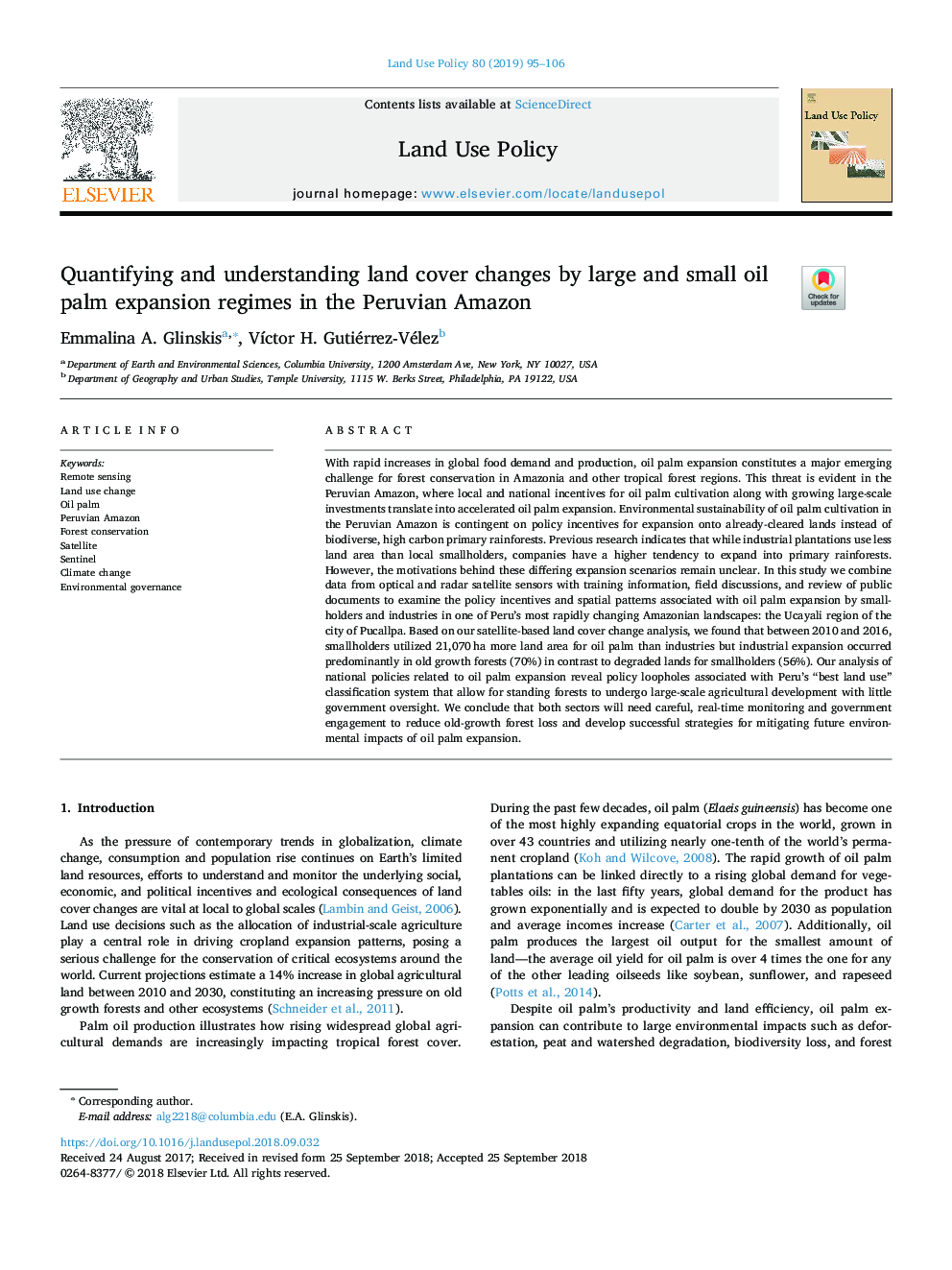| کد مقاله | کد نشریه | سال انتشار | مقاله انگلیسی | نسخه تمام متن |
|---|---|---|---|---|
| 11012806 | 1797865 | 2019 | 12 صفحه PDF | دانلود رایگان |
عنوان انگلیسی مقاله ISI
Quantifying and understanding land cover changes by large and small oil palm expansion regimes in the Peruvian Amazon
ترجمه فارسی عنوان
اندازه گیری و درک زمین های پوسته توسط رژیم های بزرگ و کوچک ریشه های نخل نفت در آمازون پرو
دانلود مقاله + سفارش ترجمه
دانلود مقاله ISI انگلیسی
رایگان برای ایرانیان
کلمات کلیدی
موضوعات مرتبط
علوم زیستی و بیوفناوری
علوم کشاورزی و بیولوژیک
جنگلداری
چکیده انگلیسی
With rapid increases in global food demand and production, oil palm expansion constitutes a major emerging challenge for forest conservation in Amazonia and other tropical forest regions. This threat is evident in the Peruvian Amazon, where local and national incentives for oil palm cultivation along with growing large-scale investments translate into accelerated oil palm expansion. Environmental sustainability of oil palm cultivation in the Peruvian Amazon is contingent on policy incentives for expansion onto already-cleared lands instead of biodiverse, high carbon primary rainforests. Previous research indicates that while industrial plantations use less land area than local smallholders, companies have a higher tendency to expand into primary rainforests. However, the motivations behind these differing expansion scenarios remain unclear. In this study we combine data from optical and radar satellite sensors with training information, field discussions, and review of public documents to examine the policy incentives and spatial patterns associated with oil palm expansion by smallholders and industries in one of Peru's most rapidly changing Amazonian landscapes: the Ucayali region of the city of Pucallpa. Based on our satellite-based land cover change analysis, we found that between 2010 and 2016, smallholders utilized 21,070âha more land area for oil palm than industries but industrial expansion occurred predominantly in old growth forests (70%) in contrast to degraded lands for smallholders (56%). Our analysis of national policies related to oil palm expansion reveal policy loopholes associated with Peru's “best land use” classification system that allow for standing forests to undergo large-scale agricultural development with little government oversight. We conclude that both sectors will need careful, real-time monitoring and government engagement to reduce old-growth forest loss and develop successful strategies for mitigating future environmental impacts of oil palm expansion.
ناشر
Database: Elsevier - ScienceDirect (ساینس دایرکت)
Journal: Land Use Policy - Volume 80, January 2019, Pages 95-106
Journal: Land Use Policy - Volume 80, January 2019, Pages 95-106
نویسندگان
Emmalina A. Glinskis, VÃctor H. Gutiérrez-Vélez,
